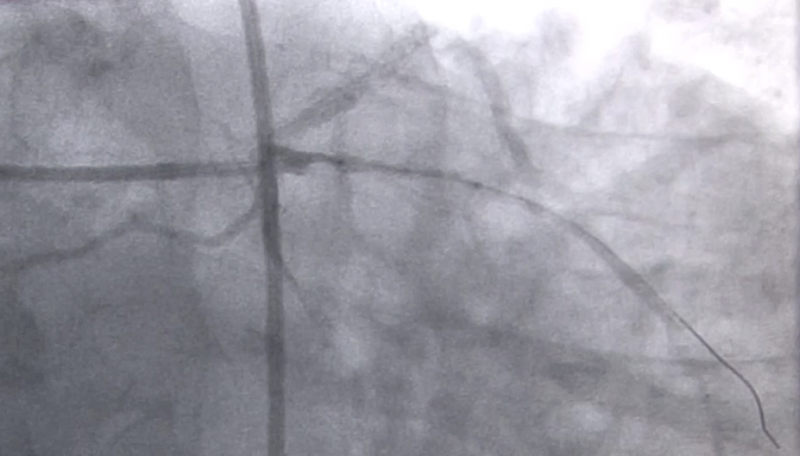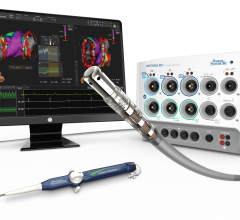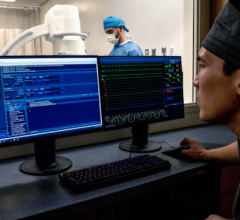
In an era of healthcare reform and a push to meet appropriate use guidelines for tests, imaging and therapy amid declining reimbursements, there has been much discussion about implementation of clinical decision support software (CDS). There is apprehension by some physicians who view CDS as technology telling doctors how to practice medicine. There are others in healthcare who are concerned about adding cost with the implementation of this software and how it will be updated based on the most current clinical data and practice guidelines. However, if implemented in a way where it is integrated with workflow and accepted by the physicians and hospital leadership, CDS has helped some hospitals meet appropriate use criteria and reduce unnecessary tests, which in turn helped reduce healthcare costs.

Oklahoma Heart Hospital (OHH), Oklahoma’s first dedicated heart hospital, has excelled at creating quality outcomes through an integrated approach to patient care. To maintain this culture of quality, its team of more than 60 physicians, including interventional cardiologists, general cardiologists, cardiothoracic surgeons and electrophysiologists, practice a systematic process of patient care that includes high adherence to a set of core measures or indicators. Specifically, managing a patient’s risk for sudden cardiac death (SCD) is a critical piece of the care.
Over the past decade in the United States, there has been growing interest in transradial artery percutaneous access as a way to significantly reduce bleeding rates and access site complications. However, adoption in the United States has been slow compared to other parts of the world, partly due to lack of training in interventional programs until recently. In articles and sessions at various cardiology conferences, I have heard varying U.S. adoption rate percentages.
Providing exceptional cardiovascular care for patients to achieve the best possible outcomes is the number one goal for ...
Terumo Medical Corp. announced it filed a patent infringement lawsuit against Vascular Solutions Inc. and Lepu Medical Technology (Beijing) Co. Ltd. in the U.S. District Court of New Jersey.
Esaote launched its next generation imaging technology for dedicated MRI and ultrasound. The eHD for ultrasound and eXP technology for dedicated MRI represent step-change innovations in the accuracy, quality, speed and flexibility of imaging technology.

In the current era of healthcare reform and increasing requirements to follow appropriate use criteria, any technology that offers a basic yes or no answer to whether a patient should be treated or tested may have a major impact on healthcare. Fractional flow reserve (FFR) is a poster child example of this type of technology, which eliminates intra-observe variability and physician intuition and replaces it with a straightforward index based on clinical evidence. However, while FFR offers an accurate diagnostic tool to provide functional data that the human eye alone cannot see, its use has been limited by its cost and the time it takes to perform.
Cardiac positron emission tomography (PET) is growing in popularity among cardiologists because it provides the ability ...
Zoll’s RescueNet 12-Lead is a free and versatile transmission system that allows healthcare providers to receive and manage 12-lead ECGs from just about anywhere. It is browser based for maximum flexibility and universal access. RescueNet 12-lead data can be accessed via e-mail, fax, computer, tablet, or handheld simultaneously. The system is safe and effective for hospitals. All information is encrypted and password protected, and supports customer compliance requirements with HIPAA and HITECH. All 12-leads are archived in the cloud and system activity reports provide information to manage workflow.

A recent review of data from the CathPCI Registry, part of the American College of Cardiology’s (ACC) National Cardiovascular Data Registry (NCDR), offers some insight into average, real-world D2B times.[1] For STEMI patients who arrived at an angioplasty-capable hospital, the average time from hospital arrival to treatment was 64.5 minutes. For patients requiring transfer to another hospital, the average time from arrival at the first hospital to treatment was 121 minutes.

Time is critical for the thousands of patients that suffer from an ST-elevation myocardial infarction (STEMI) each year. Current American College of Cardiology/American Heart Association (ACC/AHA) guidelines recommend that a hospital’s door-to-balloon (D2B) times for STEMI patients be 90 minutes or less, starting from the moment patients enter the emergency department (ED) to the second a percutaneous coronary intervention (PCI) is performed. Hospitals with catherization laboratories are using a range of methods, varying from the use of advanced technologies to the implementation of certain protocols, to meet this target and shave off their D2B times.
When performing radiofrequency (RF) ablation to treat cardiac arrhythmia, medical professionals must balance the safety ...

There has been much discussion about how use of transradial access may help reduce costs by cutting hospital admissions, length of stay and observation periods, while also reducing bleeding complications and the need for transfusions. Few centers could offer hard numbers showing these savings, however empirical evidence is now surfacing that these statements are true. The numbers show that transradial programs are impacting several hospitals’ bottom lines.
Agfa HealthCare's stated core belief is centered around helping imaging providers succeed, yet a majority of U.S. clients interviewed by KLAS report gaps in reaching desired results when using Agfa as a vendor. The reasons and other details can be found in the new KLAS vendor-specific report Agfa HealthCare Study 2013: Partnering with Agfa in 2013.
Fujifilm Medical Systems U.S.A. Inc. launched the Synapse Vendor Neutral Archive (VNA) into its informatics portfolio. The technology will enable customers to manage all types of data generated within their healthcare institution. Instead of the data being standards or non-standards based, Synapse VNA technology will catalog and maintain the data in a patient centric model allowing a single access point for EMRs and other systems.
Change Healthcare Cardiology Hemodynamics is an integrated hemodynamic monitoring system for monitoring vital signs and ...
TeraRecon highlighted the broad capability of its flagship iNtuition enterprise image management solution to support enterprise-wide vendor-neutral viewing of medical images, at the annual meeting of the Healthcare Information and Management Systems Society, (HIMSS), March 4-6, 2013.
Bayer Healthcare is expanding its global distribution network for the Medrad Intego positron emission tomography (PET) Infusion System through a new distribution agreement with Comecer SPA. Through this agreement, Bayer and Comecer are providing customers with an integrated nuclear medicine solution – combining the clinical administration capabilities of Intego with the Comecer's protection technologies for PET/CT centers around the world.
Researchers at The Johns Hopkins University and Yale University have discovered that a specialized receptor, normally found in the nose, is also in blood vessels throughout the body, sensing small molecules created by microbes that line mammalian intestines, and responding to these molecules by increasing blood pressure. The finding suggests that gut bacteria are an integral part of the body’s complex system for maintaining a stable blood pressure.

 March 06, 2013
March 06, 2013





